Editor’s note: This year it will be 70 years since the atomic bomb was dropped on Hiroshima. What is not widely known is that Japan was working on building its own atomic bomb, and if they had been faster, many believe that Imperial Japan would have used it. It does not lesson the horror of what was done but it should be noted. War is a horrible thing and it seems like it would be a tragedy to ever see Japan take up the mantle of war again. And the spectre of nuclear energy unleashed by the bomb is something that haunts this country as well, something that maybe should be abandoned as well. For a perspective on what the bomb meant to Japan and the Japanese people, Kaori Shoji, writes on it eloquently.
A baby born in in the year the Japanese surrendered in WWII – the same year two atom bombs were dropped on Hiroshima and Nagaaki respectively – has turned 70 years old. During these 7 decades, the two cities had known starvation, struggle and the kind of recovery the majority of the Japanese thought was impossible.
On August 6th, 1945, above Hiroshima City, American bomber pilots first scattered flyers from their planes that warned all civilians to evacuate the area. The civilians – consisting mainly of hungry women, children and the elderly, picked up the flyers but couldn’t make out the words. For the past 6 years the Japanese military had banned all use of English words like “radio” and “milk” (not that the majority of the public had access to such luxuries) and drummed it into the Japanese public that the Americans and British were ogres or beasts.
A short while later, a huge mushroom cloud burst in the sky and in what seemed like a matter of seconds, the entire city went up in flames. Charred bodies were everywhere, but those who died instantly were better off than those that survived – suffering from horrendous burns and a raging thirst, they died in unspeakable agony within hours or days or weeks, depending on their exposure to flames and radiation.
It took some time for the news to travel up and down the archipelago. In Tokyo, people heard that a terrible mega-bomb had been dropped on Hiroshima, but they were too busy running for their lives like cockroaches, under firebombs that exploded in the sky and razed entire districts in a matter of hours. My grandmother, who was in middle school at the time, said that 24 hours after the a-bomb dropped on Hiroshima, people were already whispering about it on the streets but “we were too desperate to pay much attention.” Three days later on August 9th, another atomic bomb was dropped on Nagasaki. On August 15th, the Emperor of Japan went on the radio and announced to his people that after years of everyone having to “endure the un-endurable,” the war had finally ended.
The baby is now 70, and s/he has turned into a grandparent. This baby has only a sketchy memory of the terrible years after the war. By the time this baby grew into a teenager and graduated from high school, s/he had enough to eat and clothes on their back. They could look forward to a solid if not a personally happy future, with job security and a house in the suburbs. Their lives were made infinitely easier than their parents,’ with appliances, gadgets and the all-important, sheerly reliable Japanese car. At the back of their minds however, lies a hard nugget of anxiety and a deep sense of sadness. Take for example, the case of Shizuko Ohnishi, whose father died in Hiroshima’s nuclear bomb attack 2 months before she was born. Her pregnant mother had been staying with relatives in the mountains, 20 kilometers from the city and subsequently been spared. “Or else I never would have been born,” said Ms. Ohnishi quietly. She still visits the city’s hospital – called the “Genbaku Byouin (Nuclear Bomb Hospital) that treats victims from 70 years ago. “I wasn’t born yet, but my mother was exposed to radiation and she died in her 50s from thyroid cancer. It follows that I would go the same way though I didn’t expect to outlive her this long. I consider the last 20 years as a bonus I don’t really deserve.”
Ms. Ohnishi’s words are in a way, typical of those who have been through “that day.” The Japanese feel they are to blame – for Hiroshima and Nagasaki, for the over 800,000 civilian deaths, the misery and poverty during the postwar years. They wanted to sweep all the reminders of a past blackened by death and destruction, right under some heavy futons which is why not a whole lot of Japanese born between the 1930s, right up until the 1970s, are willing to discuss or dwell on that period – especially not with foreigners, not to mention Americans. During these 7 decades US-Japan relations have been a defining factor behind Japanese policy, economy and export industry. It has brought us among other things, the Peace Constitution and Tokyo Disneyland. So hey – better to pretend all that stuff just never happened, right? This logic is in the same ballpark with the logic that over the years, has banned manga and literature depicting the bomb attacks. The latest to come under restriction is the classic manga “Hadashi no Gen (Barefoot Gen)” series by Keiji Nakazawa. Several school boards in Japan have taken it out of circulation, ostensibly because it contains “discriminatory language” including “kichigai (moron, or crazy person).” WTF, big time. Still, this sort of thing keeps happening, precisely because the victims say things like they don’t deserve to live until 70.
In the meantime, Hiroshima has moved on from becoming a blackened, barren land to a glittering urban epicenter, flush with money and guarded by Japan’s most efficient regional police force. The city’s symbol remains the Atomic Dome – the former “Industry Endorsement Center” built in the early 20th century. It was one of Hiroshima’s first western style buildings made of concrete, and equipped with a domed ceiling which most Japanese had never seen. In the aftermath of the a-bombing, 90% of the main facade was ripped apart by flames but the dome structure remained.
To the rest of the world, the dome became a symbol of mankind’s first deployment of the nuclear bomb. To the survivors in Hiroshima, it represented a mega-scar that wouldn’t go away. Months after the bombing, the more audacious types gathered at the dome, bared their torsoes to show their burn marks and posed next to grinning American Occupation soldiers who loved to take photos and send them back to their families. This brought them a few dollars and in those days, a few dollars was wealth. Others picked up bent, burned and twisted pieces of steel or rubble, human bones and the like, and sold them to the soldiers as souvenirs. But these people disappeared in the early 1950s as Hiroshima concentrated its efforts on looking forward and marching the march of the rapid growth economy. It was during this time too, that Hiroshima’s mayoral office debated on whether to keep the dome going or to tear it down. It brought back memories too terrible to contemplate, but on the other hand, Germany had turned Auschwitz into a museum. Shouldn’t they like, do the same?
In the midst of all this, the survivors in Nagasaki took second place. They were like the back-up chorus, always several feet from center stage. Hiroshima now has a world-wide repute but Nagasaki less so, and you can see it in the vastly differing ways the two cities have dealt with the past. Nagasaki has remained faithful to its illustrious roots as Japan’s one and only port open to the outside world (actually just mainland China, Korea and the Netherlands) during the Tokugawa Shogunate, and a safe haven for Japan’s “Secret Christians” who went into hiding for 3 centuries after Christianity was banned in the late 1500s. Until Japan officially opened her doors to the West in 1865, these people built clandestine altars and carved statues of the Virgin Mary, always in fear of being discovered, tortured and impaled on the end of a spear until dead, as mandated by law. When the bomb was dropped, it first struck the Nagasaki City Prison before spreading out over the entire city, and destroyed Nagasaki’s iconic Urakami Cathedral, among everything else. In the Cathedral neighborhood, there were an estimated 14,000 Catholic inhabitants. Over 8000 died from the bomb and Nagasaki considers the victims to be martyrs.
Today, Nagasaki remains somewhat provincial and markedly more laid-back than Hiroshima. Urakami Cathedral has been rebuilt and the city has maintained close ties with the Vatican. Apart from commemorating the a-bomb’s 70th year anniversary, Nagasaki is celebrating 150 years since the official revival of Christianity. There’s not much here in the way of industry, despite the fact that Nagasaki was the site of Japan’s very first trading company (Kameyama Shachu). The police and yakuza forces – so rampant in Hiroshima, just doesn’t have the same sway here. Everything about it feels retro and exotic, like the slabs of whale meat on display in the local markets as if no one here has heard of Greenpeace. The local celebrity is actor Masaharu Fukuyama and local legendary figures include Thomas Glover, reputed to be a masonic spy for the British government when he came over here in 1859.
Nagasaki’s Peace Park feels very different from Hiroshima’s – more formal and less a part of the daily fabric, though ice cream vendors call out to American military folks out for a jaunt in Nagasaki from the naval base in nearby Sasebo. “Gee, that’s sad,” said a blonde woman to her husband, as they looked over the bomb replica at the museum, and reading the story of a little boy who showed up at a crematorium with a dead baby strapped to his back. Over the years, surveys have consistently shown that over 50% of Americans think the bomb attacks were “necessary” and “not wrong.” No American in government has ever issued an apology.
The Dome in Hiroshima is undergoing major repairs, in time for the Olympics and an expected tidal wave of foreign visitors. It resides in the Peace Park, which is a pretty piece of urban greenery where gaijin tourist couples laugh and frolic and take selfies, right in front of the Dome. Local children scream and play while their mothers stand gossiping. Seventy years has gone by and the area surrounding the Dome has shifted from war atrocity memorial to a somewhat banal city park where a white construction sheet covers a small dome structure. It’s hard to say whether this is a good thing. It probably is, though that very thought clogs my throat like the ghost of a sobbing voice.
by Kaori Shoji
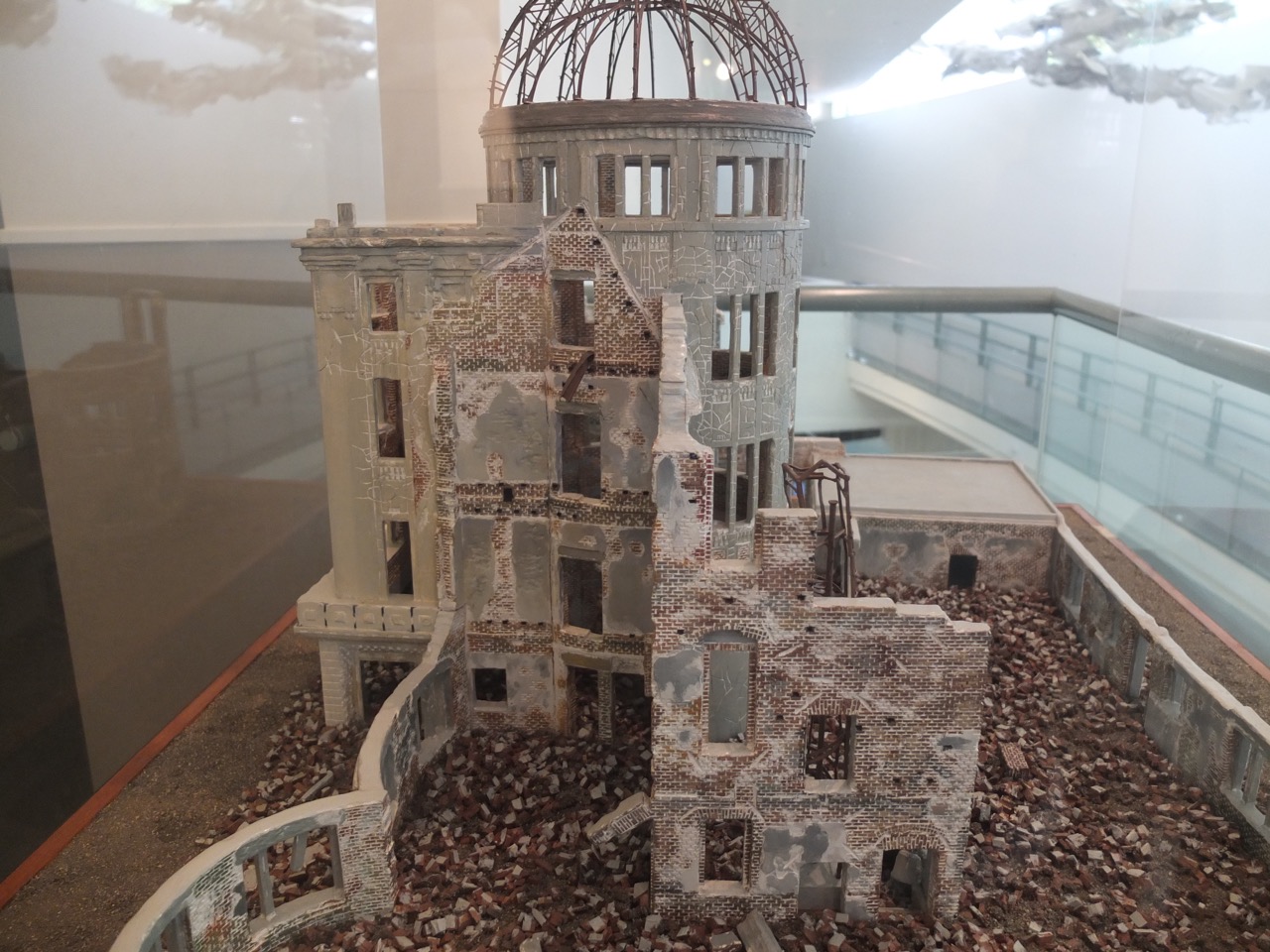
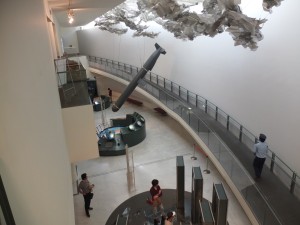
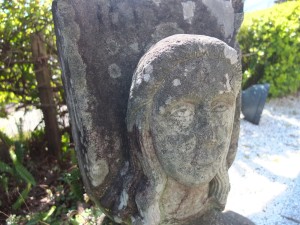
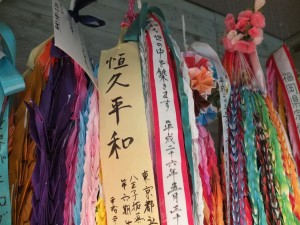
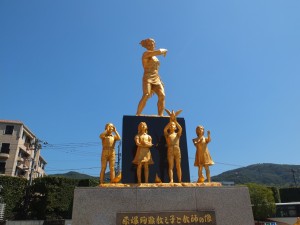
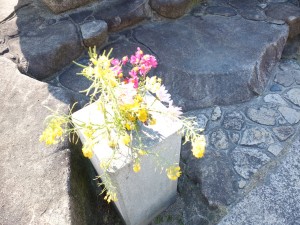
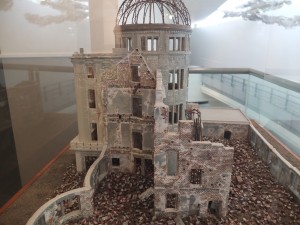
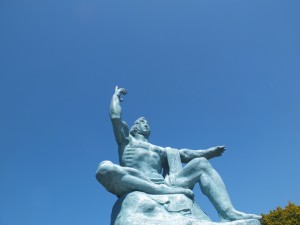
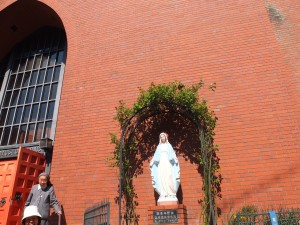
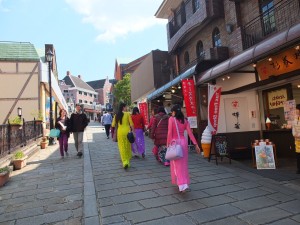
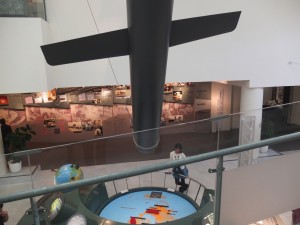
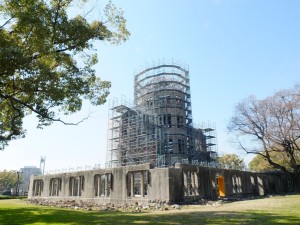
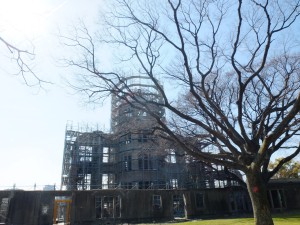
Germany did not turn Auschwitz into a museum – Poland did since most of the over 1 million prisoners murdered there were its citizens. Thank you for the text.
On August 15th, the Emperor of Japan went on the radio and announced to his people that after years of everyone having to “endure the un-endurable,” the war had finally ended.
Actually that phrase was used by the Emperor to urge his people to prepare to “endure the unendurable,” the humiliation of surrender and imminent occupation by foreign military forces.
Mark, thank you for the correction. Duly noted.